Rohola Zandie
The Dissipation Theory of Aging: A Quantitative Analysis Using a Cellular Aging Map
Apr 17, 2025Abstract:We propose a new theory for aging based on dynamical systems and provide a data-driven computational method to quantify the changes at the cellular level. We use ergodic theory to decompose the dynamics of changes during aging and show that aging is fundamentally a dissipative process within biological systems, akin to dynamical systems where dissipation occurs due to non-conservative forces. To quantify the dissipation dynamics, we employ a transformer-based machine learning algorithm to analyze gene expression data, incorporating age as a token to assess how age-related dissipation is reflected in the embedding space. By evaluating the dynamics of gene and age embeddings, we provide a cellular aging map (CAM) and identify patterns indicative of divergence in gene embedding space, nonlinear transitions, and entropy variations during aging for various tissues and cell types. Our results provide a novel perspective on aging as a dissipative process and introduce a computational framework that enables measuring age-related changes with molecular resolution.
Cellular Development Follows the Path of Minimum Action
Apr 10, 2025Abstract:Cellular development follows a stochastic yet rule-governed trajectory, though the underlying principles remain elusive. Here, we propose that cellular development follows paths of least action, aligning with foundational physical laws that govern dynamic systems across nature. We introduce a computational framework that takes advantage of the deep connection between the principle of least action and maximum entropy to model developmental processes using Transformers architecture. This approach enables precise quantification of entropy production, information flow curvature, and local irreversibility for developmental asymmetry in single-cell RNA sequence data. Within this unified framework, we provide interpretable metrics: entropy to capture exploration-exploitation trade-offs, curvature to assess plasticity-elasticity dynamics, and entropy production to characterize dedifferentiation and transdifferentiation. We validate our method across both single-cell and embryonic development datasets, demonstrating its ability to reveal hidden thermodynamic and informational constraints shaping cellular fate decisions.
Artificial Emotional Intelligence in Socially Assistive Robots for Older Adults: A Pilot Study
Jan 26, 2022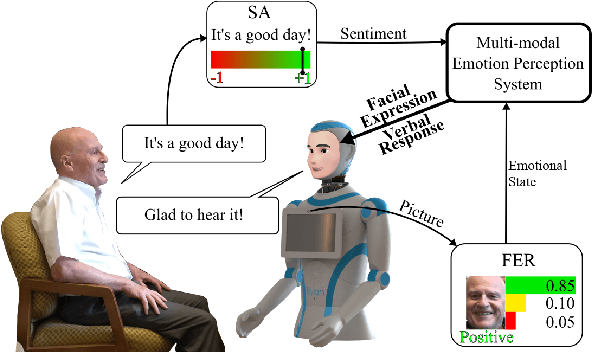
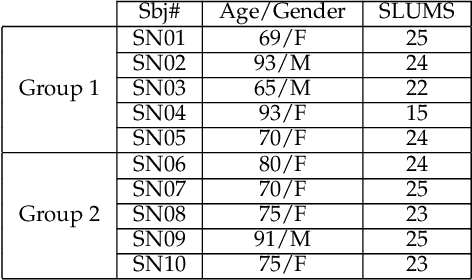

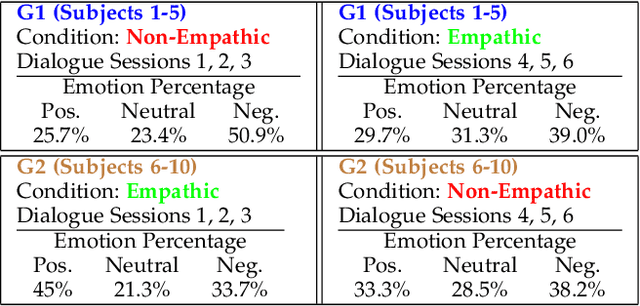
Abstract:This paper presents our recent research on integrating artificial emotional intelligence in a social robot (Ryan) and studies the robot's effectiveness in engaging older adults. Ryan is a socially assistive robot designed to provide companionship for older adults with depression and dementia through conversation. We used two versions of Ryan for our study, empathic and non-empathic. The empathic Ryan utilizes a multimodal emotion recognition algorithm and a multimodal emotion expression system. Using different input modalities for emotion, i.e. facial expression and speech sentiment, the empathic Ryan detects users' emotional state and utilizes an affective dialogue manager to generate a response. On the other hand, the non-empathic Ryan lacks facial expression and uses scripted dialogues that do not factor in the users' emotional state. We studied these two versions of Ryan with 10 older adults living in a senior care facility. The statistically significant improvement in the users' reported face-scale mood measurement indicates an overall positive effect from the interaction with both the empathic and non-empathic versions of Ryan. However, the number of spoken words measurement and the exit survey analysis suggest that the users perceive the empathic Ryan as more engaging and likable.
RyanSpeech: A Corpus for Conversational Text-to-Speech Synthesis
Jun 15, 2021
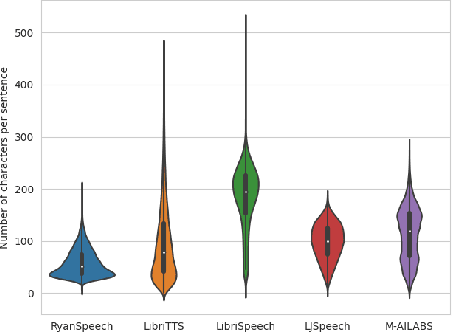
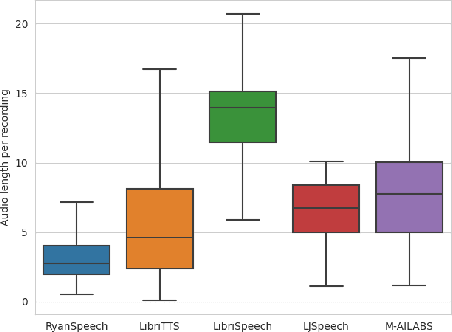
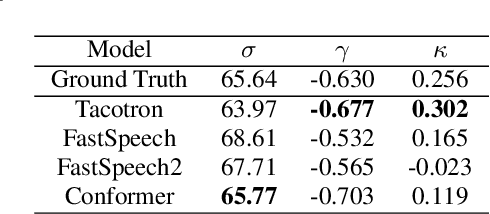
Abstract:This paper introduces RyanSpeech, a new speech corpus for research on automated text-to-speech (TTS) systems. Publicly available TTS corpora are often noisy, recorded with multiple speakers, or lack quality male speech data. In order to meet the need for a high quality, publicly available male speech corpus within the field of speech recognition, we have designed and created RyanSpeech which contains textual materials from real-world conversational settings. These materials contain over 10 hours of a professional male voice actor's speech recorded at 44.1 kHz. This corpus's design and pipeline make RyanSpeech ideal for developing TTS systems in real-world applications. To provide a baseline for future research, protocols, and benchmarks, we trained 4 state-of-the-art speech models and a vocoder on RyanSpeech. The results show 3.36 in mean opinion scores (MOS) in our best model. We have made both the corpus and trained models for public use.
Topical Language Generation using Transformers
Mar 11, 2021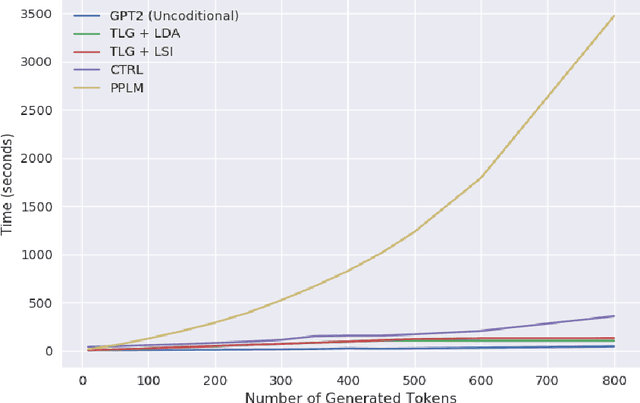
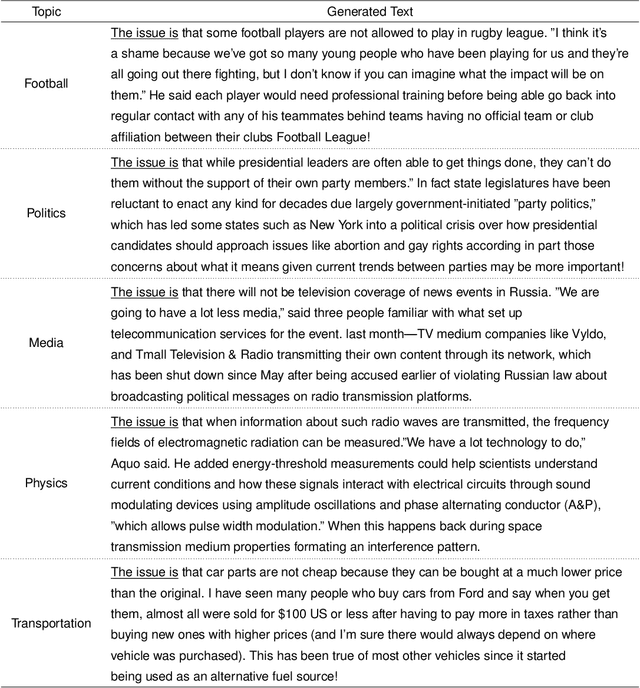
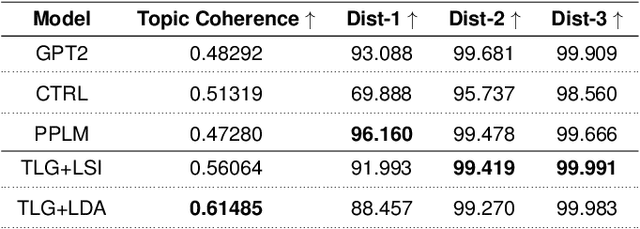
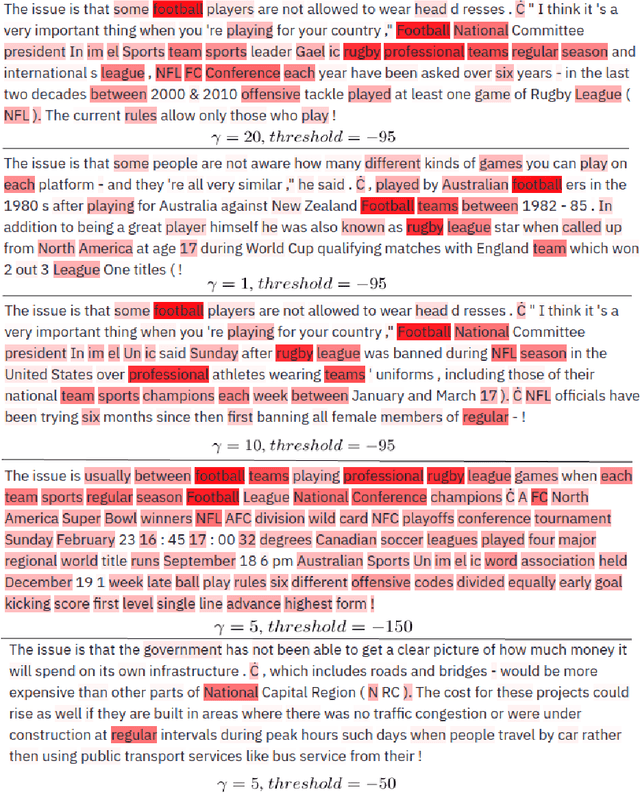
Abstract:Large-scale transformer-based language models (LMs) demonstrate impressive capabilities in open text generation. However, controlling the generated text's properties such as the topic, style, and sentiment is challenging and often requires significant changes to the model architecture or retraining and fine-tuning the model on new supervised data. This paper presents a novel approach for Topical Language Generation (TLG) by combining a pre-trained LM with topic modeling information. We cast the problem using Bayesian probability formulation with topic probabilities as a prior, LM probabilities as the likelihood, and topical language generation probability as the posterior. In learning the model, we derive the topic probability distribution from the user-provided document's natural structure. Furthermore, we extend our model by introducing new parameters and functions to influence the quantity of the topical features presented in the generated text. This feature would allow us to easily control the topical properties of the generated text. Our experimental results demonstrate that our model outperforms the state-of-the-art results on coherency, diversity, and fluency while being faster in decoding.
EmpTransfo: A Multi-head Transformer Architecture for Creating Empathetic Dialog Systems
Mar 05, 2020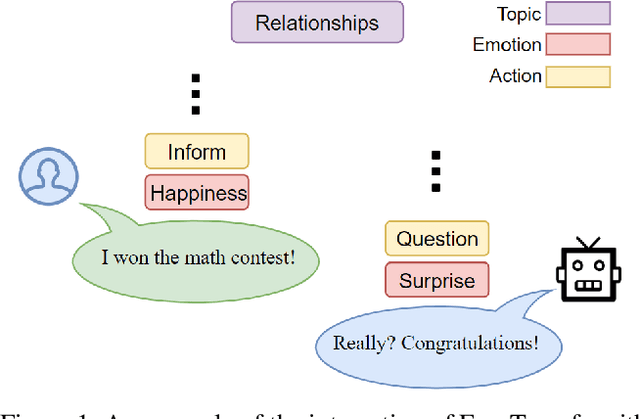

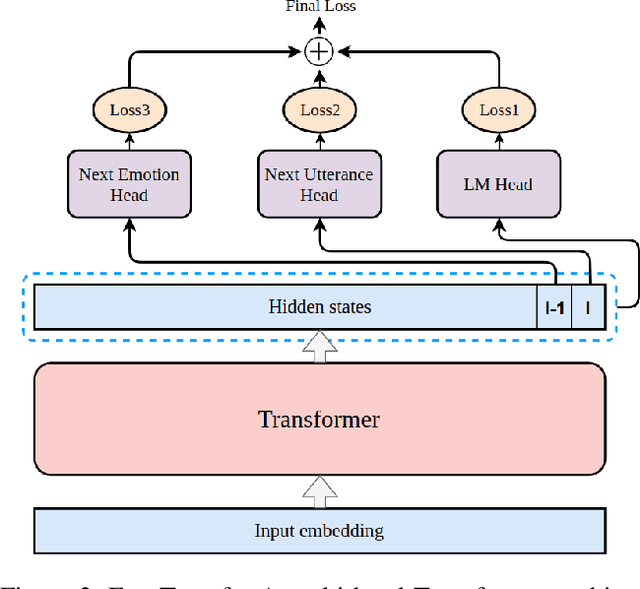
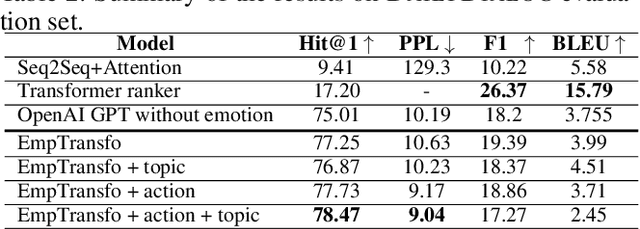
Abstract:Understanding emotions and responding accordingly is one of the biggest challenges of dialog systems. This paper presents EmpTransfo, a multi-head Transformer architecture for creating an empathetic dialog system. EmpTransfo utilizes state-of-the-art pre-trained models (e.g., OpenAI-GPT) for language generation, though models with different sizes can be used. We show that utilizing the history of emotions and other metadata can improve the quality of generated conversations by the dialog system. Our experimental results using a challenging language corpus show that the proposed approach outperforms other models in terms of Hit@1 and PPL (Perplexity).
Delivering Cognitive Behavioral Therapy Using A Conversational SocialRobot
Sep 14, 2019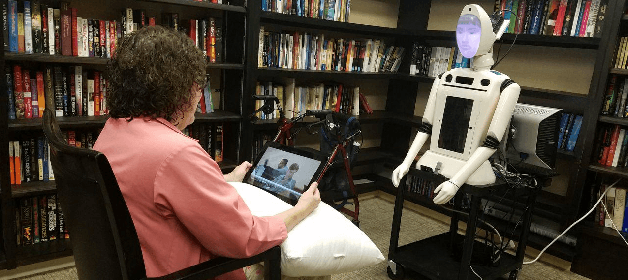



Abstract:Social robots are becoming an integrated part of our daily life due to their ability to provide companionship and entertainment. A subfield of robotics, Socially Assistive Robotics (SAR), is particularly suitable for expanding these benefits into the healthcare setting because of its unique ability to provide cognitive, social, and emotional support. This paper presents our recent research on developing SAR by evaluating the ability of a life-like conversational social robot, called Ryan, to administer internet-delivered cognitive behavioral therapy (iCBT) to older adults with depression. For Ryan to administer the therapy, we developed a dialogue-management system, called Program-R. Using an accredited CBT manual for the treatment of depression, we created seven hour-long iCBT dialogues and integrated them into Program-R using Artificial Intelligence Markup Language (AIML). To assess the effectiveness of Robot-based iCBT and users' likability of our approach, we conducted an HRI study with a cohort of elderly people with mild-to-moderate depression over a period of four weeks. Quantitative analyses of participant's spoken responses (e.g. word count and sentiment analysis), face-scale mood scores, and exit surveys, strongly support the notion robot-based iCBT is a viable alternative to traditional human-delivered therapy.
 Add to Chrome
Add to Chrome Add to Firefox
Add to Firefox Add to Edge
Add to Edge